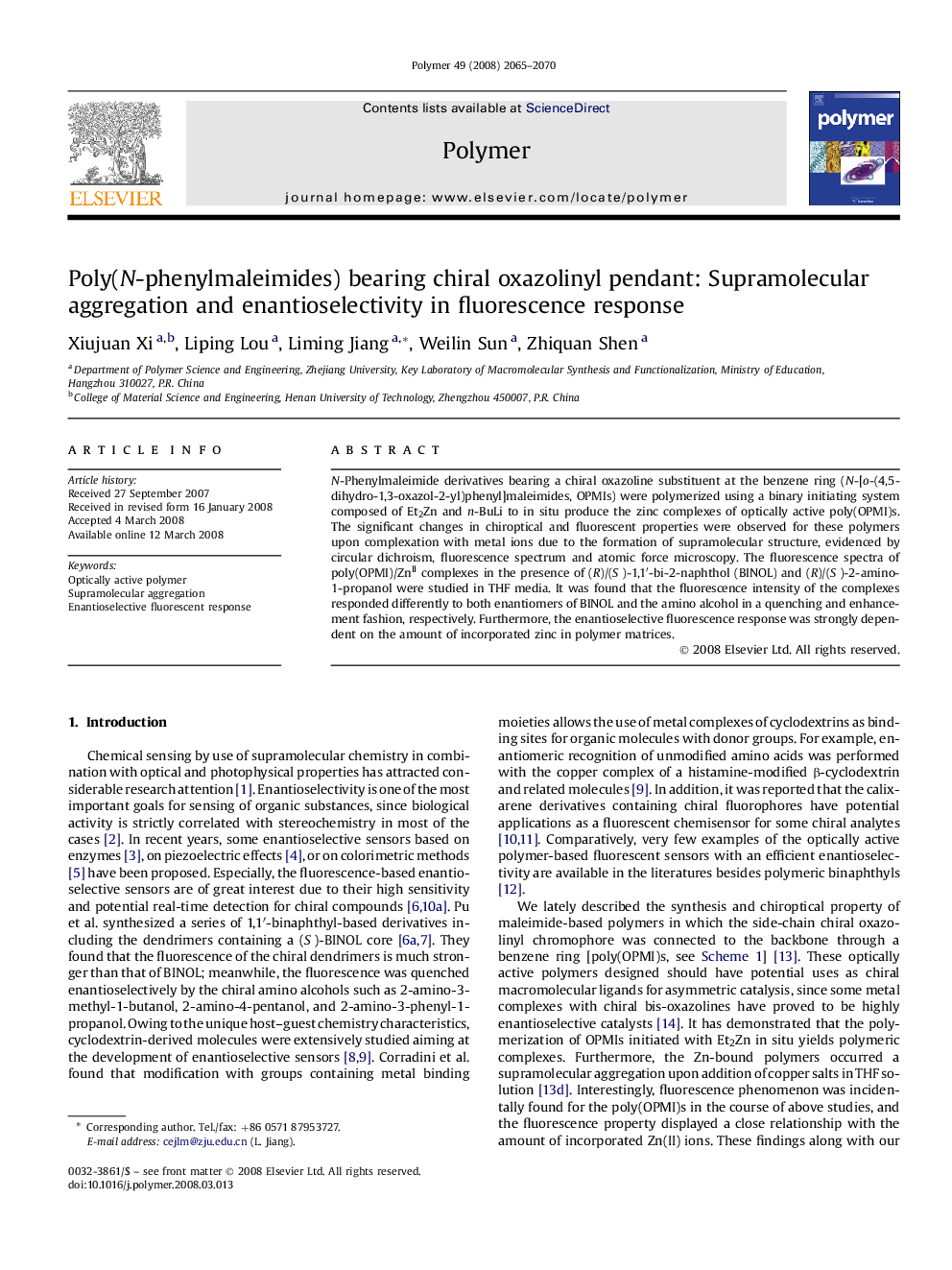| Article ID | Journal | Published Year | Pages | File Type |
|---|---|---|---|---|
| 5187652 | Polymer | 2008 | 6 Pages |
Abstract
N-Phenylmaleimide derivatives bearing a chiral oxazoline substituent at the benzene ring (N-[o-(4,5-dihydro-1,3-oxazol-2-yl)phenyl]maleimides, OPMIs) were polymerized using a binary initiating system composed of Et2Zn and n-BuLi to in situ produce the zinc complexes of optically active poly(OPMI)s. The significant changes in chiroptical and fluorescent properties were observed for these polymers upon complexation with metal ions due to the formation of supramolecular structure, evidenced by circular dichroism, fluorescence spectrum and atomic force microscopy. The fluorescence spectra of poly(OPMI)/ZnII complexes in the presence of (R)/(S)-1,1â²-bi-2-naphthol (BINOL) and (R)/(S)-2-amino-1-propanol were studied in THF media. It was found that the fluorescence intensity of the complexes responded differently to both enantiomers of BINOL and the amino alcohol in a quenching and enhancement fashion, respectively. Furthermore, the enantioselective fluorescence response was strongly dependent on the amount of incorporated zinc in polymer matrices.
Related Topics
Physical Sciences and Engineering
Chemistry
Organic Chemistry
Authors
Xiujuan Xi, Liping Lou, Liming Jiang, Weilin Sun, Zhiquan Shen,
